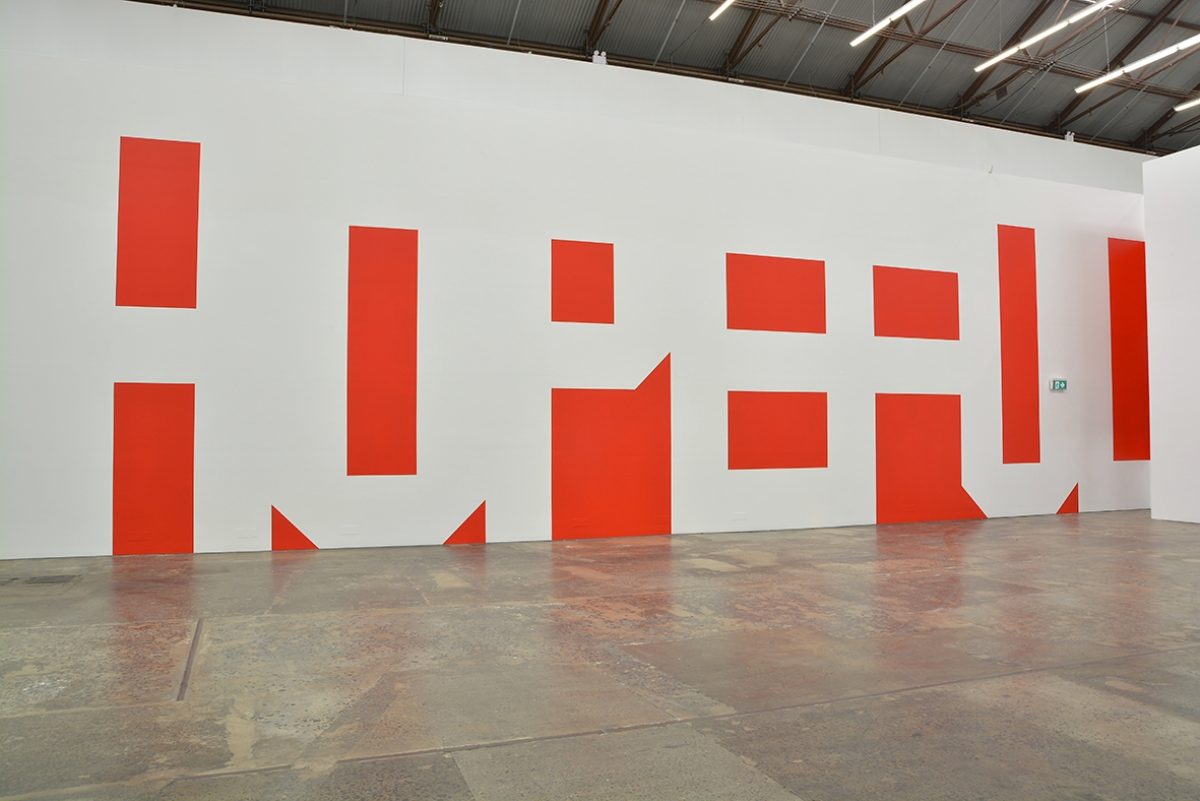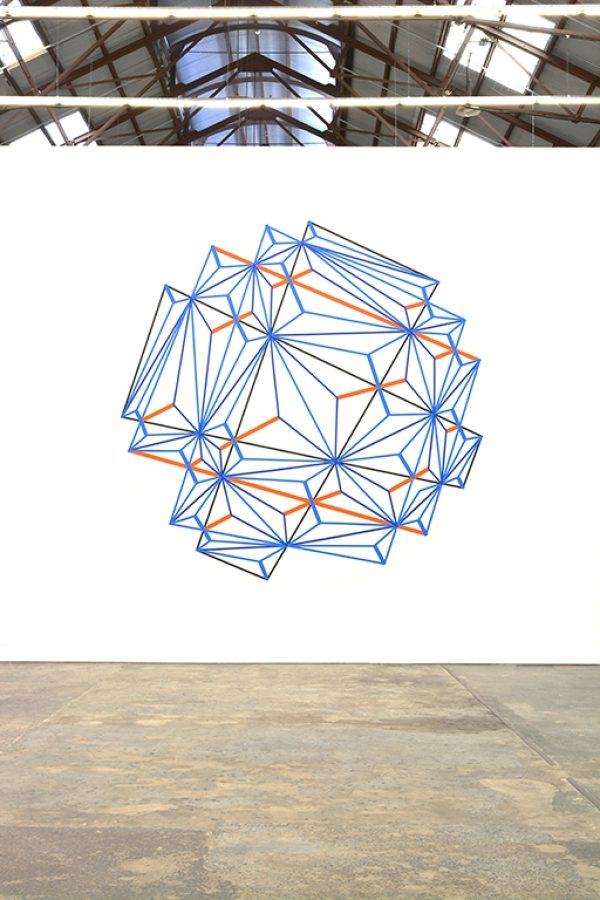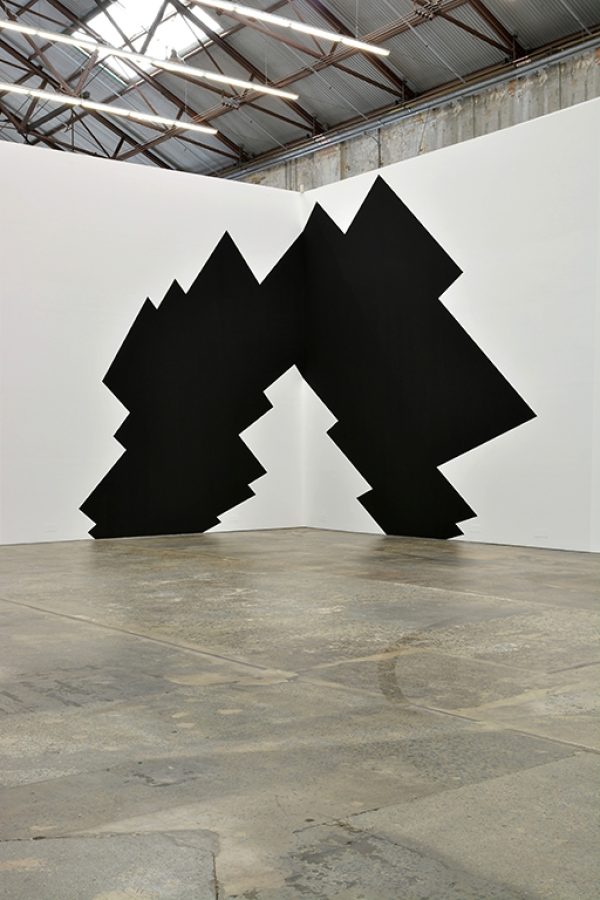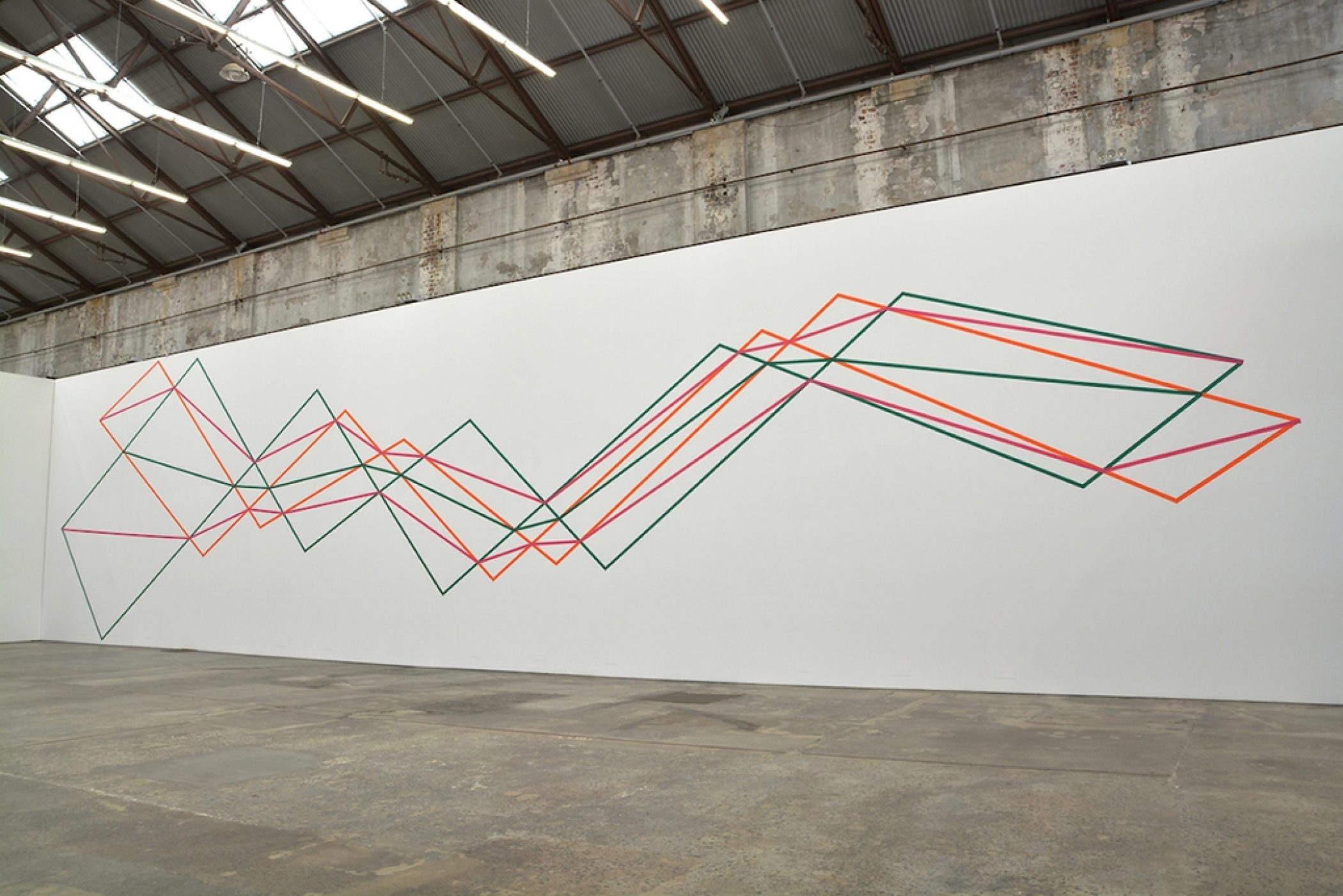Kerrie Poliness, Rose Nolan, Stephen Bram
Poliness, Nolan, Bram
20th September – 1st November 2014
Anna Schwartz Gallery Carriageworks
‘POLINESS, NOLAN, BRAM’ is an exhibition of new wall works by three leading Melbourne artists, whose diverse approaches to their medium belie a shared background and strong collective influence in contemporary Australian art.
Poliness, Nolan and Bram met in the mid-1980s where each established their own practice after studying in Melbourne. Connected through influential figures such as John Nixon and Tony Clark, they were participants in a scene which felt the global impact of theory on the art world: a rapid expansion of the field of possibility for art and artists; a place in an international community; a shift in the agency of the audience; and release from the hierarchies and nation-building aims of local art history.
While the subjects and subjectivities of their field were radically renewed, each artist conducted these new conversations in an established medium. Painting was, and continues to be, the medium in which their thinking and making locates itself. In Bram’s digital prints, Poliness’ vinyl drawings and field markings, and Nolan’s installations, the material logic is that of painting, which remains a medium that enables ideas to become material reality.
Stephen Bram has long engaged in the possibilities of shifting perspectives. His paintings, digital works and architectural constructions all explore and test methods of articulating, representing and creating space, both within and outside the artwork itself.
Bram’s wall paintings, beginning in the late 1990s with an exhibition at artist-run CBD gallery in Sydney, can be read as a moment between his paintings on canvas and his built architectural environments. As drawings of three-point perspectival space, the wall paintings create a new space with the minimum of means. They are built around, but are not about, the specific spaces they inhabit. Bram treats these physical volumes as abstracts, notions of space, allowing the site-specific to transcend the specifics of the site.
Untitled (three point perspective) is the first wall painting that Bram has designed in some ten years. As is the case for each of Bram’s paintings, this work is determined by a set of ‘points’, from which any number of variations might be made. While these points are real and defined, to Bram, they hold no importance other than anchoring the depicted space within the work — whose experience he sees as being the most important element for the viewer.
Rose Nolan uses everyday language and materials in ways that re-deploy Modernist formal tropes in a personal, playful and philosophical manner. Using a hard-edged geometric font of her own making, in characteristic red and white, Nolan’s works address the experience of seeing, being seen, and being human. She uses paint, paper, cardboard, hessian and other textiles to make tangible certain feelings: anxieties, aspirations or affirmations.
For Nolan, these wall works have been part of the ‘toolbox’ of practice, a resource to draw upon that allows an idea to hold a vast space while being at the same time, an economical use of space and materials. They allow for expansion and contraction, projection and re-scaling, all physical qualities whose psychological effects are at the core of Nolan’s work. By making language concrete in this way, Nolan allows meaning to be approached differently. The mutability of such meanings is present on her first wall work from the late 1990s, A Big Word — HERO, which was shown at CNR, a small gallery run by Bram in his studio in Carlton. Stencilled onto a window facing the street, the letters spelling HERO could be looked through; on the wall opposite, letters spelled out the work SCUMBAG. In the years since, Nolan’s works have evoked the equivocal nature of the speaker, as much as that of speech.
As with many of Nolan’s text-based works, A Big Word — HOPEFUL quickly suggests more than its face-value proposition. The bigness of hope is accompanied by its antonyms and its dangers: disappointment and cynicism are present by association, lurking in the camouflage of negative space around a single positive word. But if Nolan’s language games have always led more to questions than to answers, their seriality insists that perhaps keeping going, all things considered, is the best strategy.
Kerrie Poliness is known for both her rule-based painting and drawing works, and her research-based projects that investigate the natural and social histories of place. Her geometric wall drawings are designed to be installed by groups of participants, allowing individuals’ own processes of interpretation and decision-making to inflect the final outcome. An instruction manual for each wall drawing sets the limits of certain properties — the colours and materials used, the minimum size of the wall, or the size of the finished work, for example — and within these rules, the installers become integral to the manifestation of each iteration of a single piece. Poliness has an abiding interest in systems, symmetry and the impossibility of perfect replication. In her work, the contingencies of nature become visible through the rigid rules of logic.
Poliness came to wall painting as a way to dematerialise painting, without it disappearing. At Store 5, Melbourne, in 1989, she completed a circular, spray-painted work using masking tape for hard-edged pattern that blurred at its outer edges. From small biro drawings of complex patterns, Poliness was able to re-scale works to become much larger; this was also a strategy that allowed her work to travel — something that Bram and Nolan also found useful in their own wall works. By writing detailed instructions, Poliness can transmit a work to anyone, anywhere, and see the differences between versions. Indeed, the instructions are themselves the work: as soon as it has begun, the installation is ready for viewing.
In recent wall works, Poliness has focused on describing simple gestures though complicated instructions. In the introduction to the manual for OMG, she states: “A series of personal intuitive decisions determines the dynamics of the drawing and the level of distortion of the geometric pattern […] OMG incorporates the possibility to steer and play […] It is important to understand that there is no correct or incorrect outcomes in terms of the wave dynamics that are created. Although some drawings will be more beautiful or interesting than others.”
United in their ongoing use of the wall work as an ongoing and generative part of their respective practices, these artists allow an understanding of painting as a much-expanded medium. Emerging from a tradition of geometric abstraction, their work also incorporates key aspects of Conceptual practice that continue to course through contemporary art. Each wall work describes a concern for economy; a desire to be responsive to site; an interest in seriality and repetition; and the importance of language, performativity, and the experience of the viewer. Recalling and developing from a moment of irrevocable change in contemporary art, these new works remain invested in radical openness to the world, in a world that has become more than ever, open to art.
Images
POLINESS, NOLAN, BRAM, 2014
installation view, Anna Schwartz Gallery, Carriageworks
POLINESS, NOLAN, BRAM, 2014
installation view, Anna Schwartz Gallery, Carriageworks

Rose Nolan
A Big Word — HOPEFUL, 2014
acrylic paint directly on wall
550 cm x 2122 cm
installation view, Anna Schwartz Gallery, Carriageworks

Kerrie Poliness
OMG, 2014
wall drawing instruction book
dimensions variable

Kerrie Poliness
BBKO, 2014
Graphic film
Dimensions variable

Stephen Bram
Untitled (three point perspective), 2014
Acrylic paint directly on wall
632.4 x 472.9 x 572.6 cm



